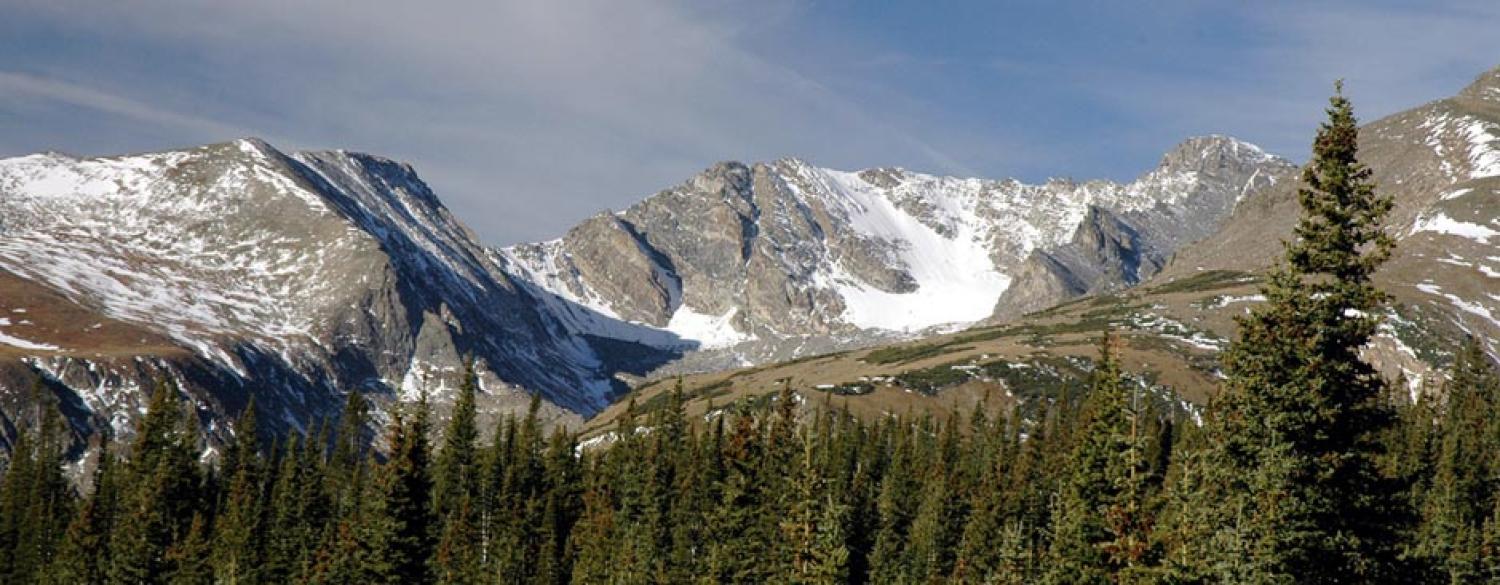Persistent places: A new project pulls together diverse groups to define and map climate change
Image: Residents gather in a community workshop hosted by the Center for Sustainable Landscapes and Communities (CSLC) at CU Boulder. Photo courtesy CSLC.
A project that unites land managers, citizens, and scientists to jointly understand how Colorado Front Range ecosystems and public lands are responding to pressures from people and climate change has been funded by the National Science Foundation (NSF)
The goal of the project is to bring together diverse groups with a stake in the Front Range public lands around the concept of climate-change refugia. Refugia, a Latin term meaning refuges, are units of a landscape that can maintain valued characteristics despite pressures such as climate change.
“Many of the things people appreciate and like about public lands and open space are things like shade along trails, or cooler temperatures on hot days,” says Keith Musselman, lead investigator on the project and a Research Associate at INSTAAR. “These attributes are related to the science of ecosystems, soil, water, climate—but scientists often don’t think of these systems in terms of the experiences they give to people.”
“The idea is to understand what people value about our public lands; and what decision makers think about when they manage these lands; and what scientists consider when they look at the ecosystems, landscape, and climate processes in these same places,” says Musselman.
By bringing together such diverse stakeholders, the project will help identify land management needs and challenges. It will also map places that are buffered from climate change—the refugia—as well as places that are at risk, or already indelibly changed. That can give land managers information they can use to decide where to invest resources.
The measurements are neat, because we’ll build a tram system at INSTAAR’s Mountain Research Station with a cart that has all kinds of environmental sensors - Keith Musselman
Funding for the project comes from an NSF program called Growing Convergence Research, which is intended to solve vexing and complex research problems, focusing on social needs, by merging ideas, knowledge, and approaches from different disciplines. The program is one of the NSF’s ten Big Ideas, emerging key areas in scientific research.
The five-year, $3.6 million grant will support undergraduate and graduate students at three universities, community college students, a postdoctoral scholar, and scientists from five institutions, including INSTAAR researchers Eve-Lyn Hinckley, John Knowles, and Merritt Turetsky. The local Front Range research will be collaboratively conducted by researchers with the National Center for Atmospheric Research, University of Colorado Denver, the University of Wyoming, and Cornell University.
The science portion of the project will adapt an advanced computer model of Earth systems, initially developed for tropical regions, to the environment of the Rocky Mountains. “These models are dynamic, and simulate the growth and death of trees, how groundwater connects to surface water, how trees connect to water and when,” says Musselman. A measurement campaign on Niwot Ridge in the Rockies will help scientists develop the model and test its performance.

Landscape around INSTAAR's Mountain Research Station
“The measurements are neat, because we’ll build a tram system at INSTAAR’s Mountain Research Station with a cart that has all kinds of environmental sensors,” says Musselman. “The cart will travel back and forth along a track. Instead of observations being made at a single location, we’ll take measurements through space and time—and that will give us a better picture of how our landscapes are connected.”
At the same time, Amanda Carrico—CU Boulder social scientist and Director of the Center for Sustainable Landscapes and Communities—will lead efforts to measure values and priorities within the Colorado public about how to manage our public lands. “Colorado will face some tough choices in the coming years and decades. We’re experiencing a growing population, increasing use of public lands, as well as the threats of climate change. It is important for the residents of Colorado to have a voice in how we set priorities as we look into the future,” says Carrico.
A coalition of 54 land managers at local, regional, and state levels will also participate in the project to shape both the research questions that are asked, and the conclusions and recommendations that the project generates.
The project will start work in mid-October.

